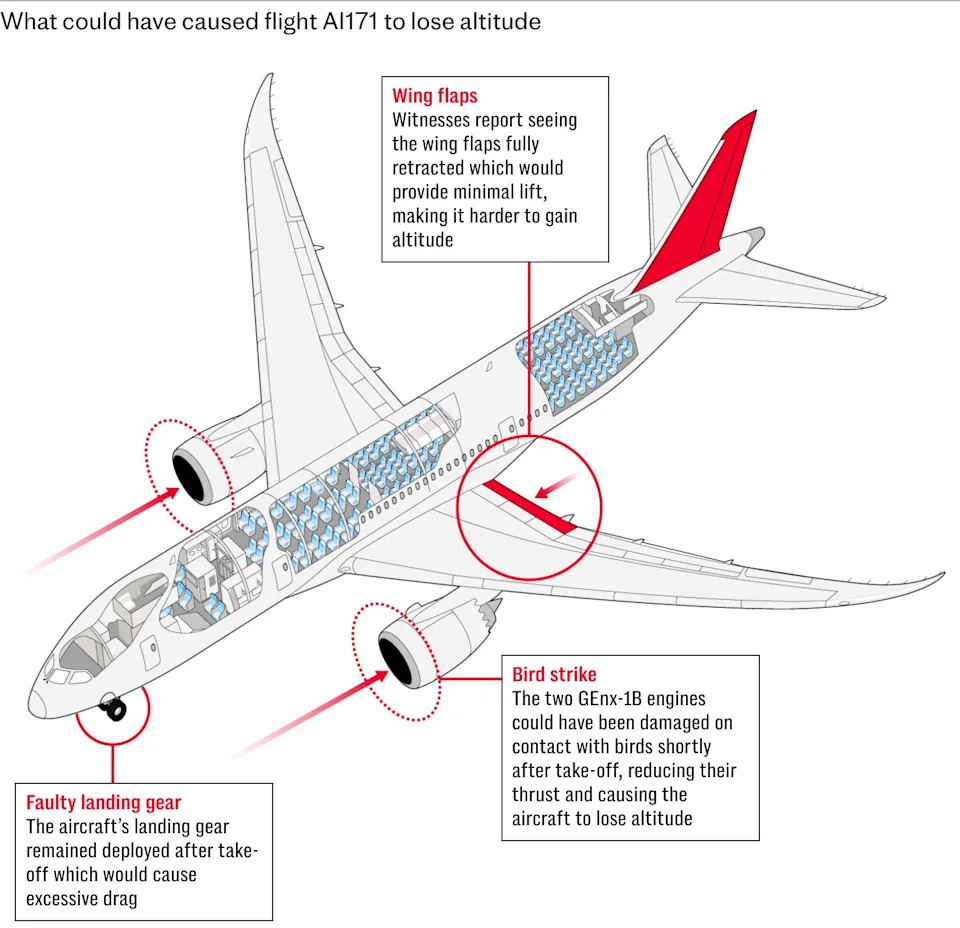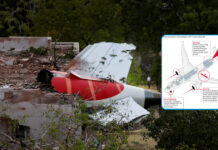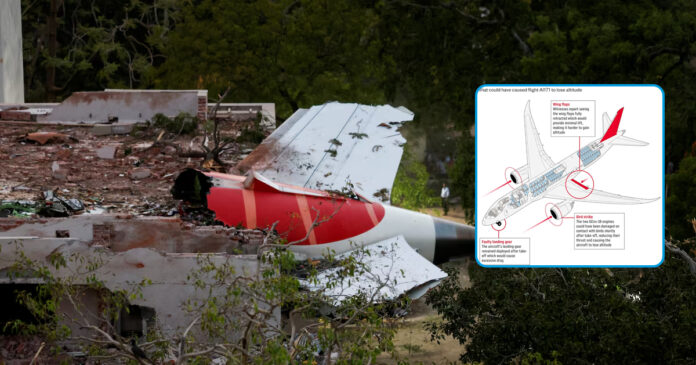A preliminary investigation report has found that there was confusion in the cockpit shortly before an Air India flight 171 crashed last month, killing 260 people.
The aircraft’s engine fuel cut-off switches had flipped almost simultaneously, cutting off fuel to both engines and causing the plane to lose power.
The Boeing 787 Dreamliner was en route from Ahmedabad to London when it crashed shortly after take-off.
According to the report released by India’s Aircraft Accident Investigation Bureau (AAIB), the aircraft immediately began losing thrust and started descending.
The report highlights that the engine fuel cut-off switches flipped from ‘run’ to ‘cut-off’ right after take-off, starving the engines of fuel.
However, there was no emergency situation that would have required such an action. The report does not state how or why the switches flipped.
Experts said it was unlikely a pilot could accidentally move these switches.
“If they were moved by a pilot, why?” said U.S. aviation safety expert Anthony Brickhouse.
According to U.S. expert John Nance, the switches flipped just one second apart, roughly the time it takes to move one and then the other manually.
He stated that, under normal circumstances, pilots would never use these switches during take-off.

Pilots’ Final Conversation
In the final moments, cockpit voice recordings captured one pilot asking the other why he had cut the fuel.
“The other pilot responded that he did not do so,” the report states.
It does not specify which pilot made the Mayday call or who said what.
CCTV footage showed the ram air turbine, a backup energy source, had deployed shortly after lift-off, suggesting the engines lost power almost immediately.
At the crash site, investigators found the fuel switches back in the ‘run’ position and signs that the engines had attempted to restart before the aircraft crashed at low altitude.
The AAIB report raised concerns about the placement of the fuel cut-off switches but said there was no evidence that Boeing or engine manufacturer GE was at fault.
The U.S. National Transportation Safety Board thanked Indian officials for their cooperation.
It noted that the report did not recommend any action for Boeing 787 operators or for GE engines.
The U.S. Federal Aviation Administration said it would follow the facts and address any safety risks identified.
Boeing said it would continue to support the investigation and Air India.
GE Aerospace did not respond immediately.
Who Were the Pilots?
Captain Sumeet Sabharwal, the 56-year-old pilot-in-command (PIC), had extensive experience, with a total of 15,638 flying hours—8,596 of those on the Boeing 787, including 8,260 hours as PIC.
The co-pilot, or first officer, was Clive Kunder, aged 32.
He had accumulated 3,403 flying hours, including 1,128 hours on the B787, all in the role of co-pilot.
His endorsements included the C172 and PA-34 as PIC, and the A320 and B787 as co-pilot.
On the day of the accident, Kunder was the pilot flying the Dreamliner, while Sabharwal was acting as the pilot monitoring.
Sabharwal was responsible for supporting the flight through communication with air traffic control and monitoring the aircraft’s systems.
Air India’s Safety Record Under Scrutiny
The crash has added pressure on Tata Group, which took over Air India in 2022 and has been working to improve its image and upgrade its fleet.
India’s aviation regulator has warned Air India multiple times for safety rule violations.
It flagged overdue checks on three Airbus planes and “serious violations” of pilot duty timings.
The European Union Aviation Safety Agency also plans to investigate Air India Express, a budget carrier, after Reuters reported the airline delayed replacing engine parts and falsified records.
India wants to become a global aviation hub like Dubai and is relying on growth in the aviation sector to help achieve broader development goals.
Second-by-Second Timeline of Flight 171’s Last Moments:
08:07:33 [GMT]: Cleared for takeoff from Ahmedabad’s runway 23.
08:07:37: Aircraft begins takeoff roll.
08:08:33: Aircraft reaches V1 (153 knots).
08:08:35: Aircraft achieves Vr (155 knots) for rotation.
08:08:39: Lift-off registered.
08:08:42: Aircraft peaks at its maximum recorded speed of 180 knots; both engine-fuel switches abruptly transition to “cutoff”.
08:08:47: Engines lose power; RAT deploys to provide emergency hydraulics.
08:08:52: Engine 1 fuel switch is returned to “run”.
08:08:54: APU inlet door begins to open (auto-start initiates).
08:08:56: Engine 2 fuel switch also moved to “run”.
08:09:05: Pilot transmits “MAYDAY MAYDAY MAYDAY”.
08:09:11: Final data recorded; aircraft hits the ground.
According to Saturday’s report, at this stage of the investigation, there is no need for airlines or engine makers to take any action regarding the Boeing 787-8 planes or GE GEnx-1B engines. Further investigation is under way.
Stay tuned to Brandsynario for the latest news and updates



































